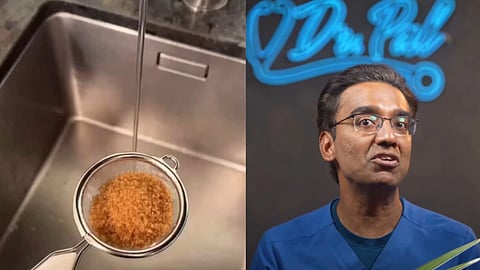Dr. Pal’s viral video explanation is simple and eye-opening. He clarifies that water is only draining certain impurities and is not proof that the it is fake or harmful.
One reason for this phenomenon could be:
Water washes away the molasses coating, leaving behind the white sugar crystals underneath.
Brown sugar is a traditional sweetener prepared from sugarcane by extracting juice, clarifying it, and boiling it into crystals.
It is a non-centrifugal cane sugar, meaning the molasses remains during manufacturing. This molasses gives brown sugar its distinctive brown-red or yellow-brown color, its unique flavor, and its nutritional profile. 1
When water runs over brown sugar, it simply washes away this surface molasses layer and reveals the underlying sugar crystals. This is not evidence of adulteration, it is basic chemistry.
The Sugar Deception: “They're All the Same to Your Body”


